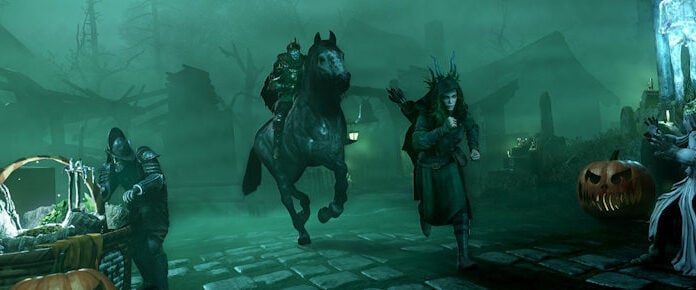
I appreciate how a lot of my opinion of Fae Farm is going to come off reductive or as I’m damning it with faint praise. It’s hard to toe that line without expressly pointing out that I’m not using a snark or sarcasm font, especially considering that this game copies the homework of sub-genre contemporaries pretty closely and its overall gameplay beats don’t seem to divert too much from my preview time in its first four chapters.
But in spite of those major points, I still absolutely loved playing the game, and I continued to lose hours to it in that “just one more turn” kind of way. Mostly because Fae Farm applies well-known life sim RPG loops extremely well, but also because the game’s fairy tale setting really hooks me in.
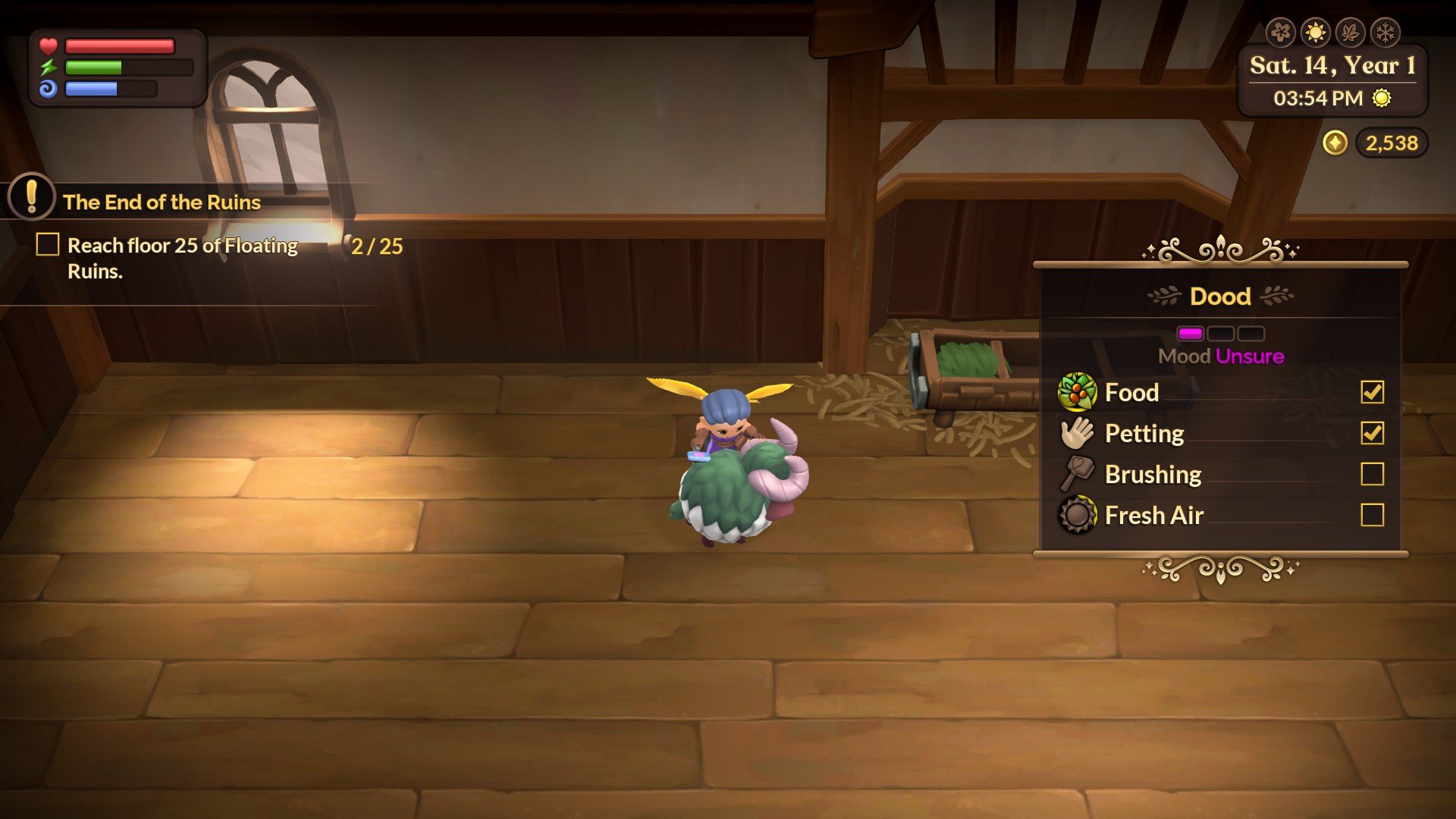
This hands-on once more comes from the press access code that I was given by Phoenix Labs to check out the game, and so it pretty much picks up right where I left off in terms of that earlier four chapter preview, where my character unlocked access to the fae realm and all of its features. Those features can really be boiled down to ones found in the “normal” world but with more bloom visual effects and pastel colors: Grass is the same but it’s called clover, trees are purple now, frogs and insects are replaced with bouncing blobs and floating sprites, and there’s another 25 levels’ worth of mine to plumb.
And I genuinely was all right with that because I was being given more of the stuff to do that I already liked doing.
Most of my playtime was derailed from following the main story primarily because I wanted to fixate on some of the other side stuff that I didn’t get a chance to really dig in to previously. That mostly involved animal husbandry, a deeper focus on farming, and taking up job quests and side quests.
The farming activities can easily be a game unto themselves for the most part, which is to be expected since this is the kind of thing you’ll be doing from the jump, but it’s no less charming as well as a nice additive to other goals. My farm was generally pretty small, as it ended up becoming a vehicle primarily aimed at empowering my character and getting her kitted out for dungeon delves, but zeroing in on the farm stuff and making it a larger gameplay experience continues to prove to be very easy to do and adorable to pull off, especially with how cuddly the animals all look.

I also have to nod in appreciation of how the game’s housing has mechanical benefits. More than just a place to plop down crafting stations and a bed, decorating with certain categories of furniture boosts the character’s health pool, stamina pool, and mana pool. It’s another layer of little goals to consider as well as a reason to expand the house. My place was getting kind of cramped.
All of this can probably take players only so far, though, which is where taking on side missions seems to come into play. These involve things as simple as reputation-boosting friend quests or NPC-specific job quests that give a long list of goals to achieve for rewards. These do eventually get locked off by a lack of story progression it seems, though; there was one point when I couldn’t continue the fishing job quests until I got to a frozen biome, and most of that area required some main story progression to fully open up, not to mention several tool upgrades.
This leads me to my delves into the fae realm, a location of bright colors that never sees its seasons or resources change even as the normal world’s seasons move along. As mentioned earlier, this layered on more crafts and crafting stations with a fantastical bent to them, while dungeon progression played similarly to the Saltwater Mines but with the added wrinkle of needing to pack potions that stopped a miasma from killing my character.
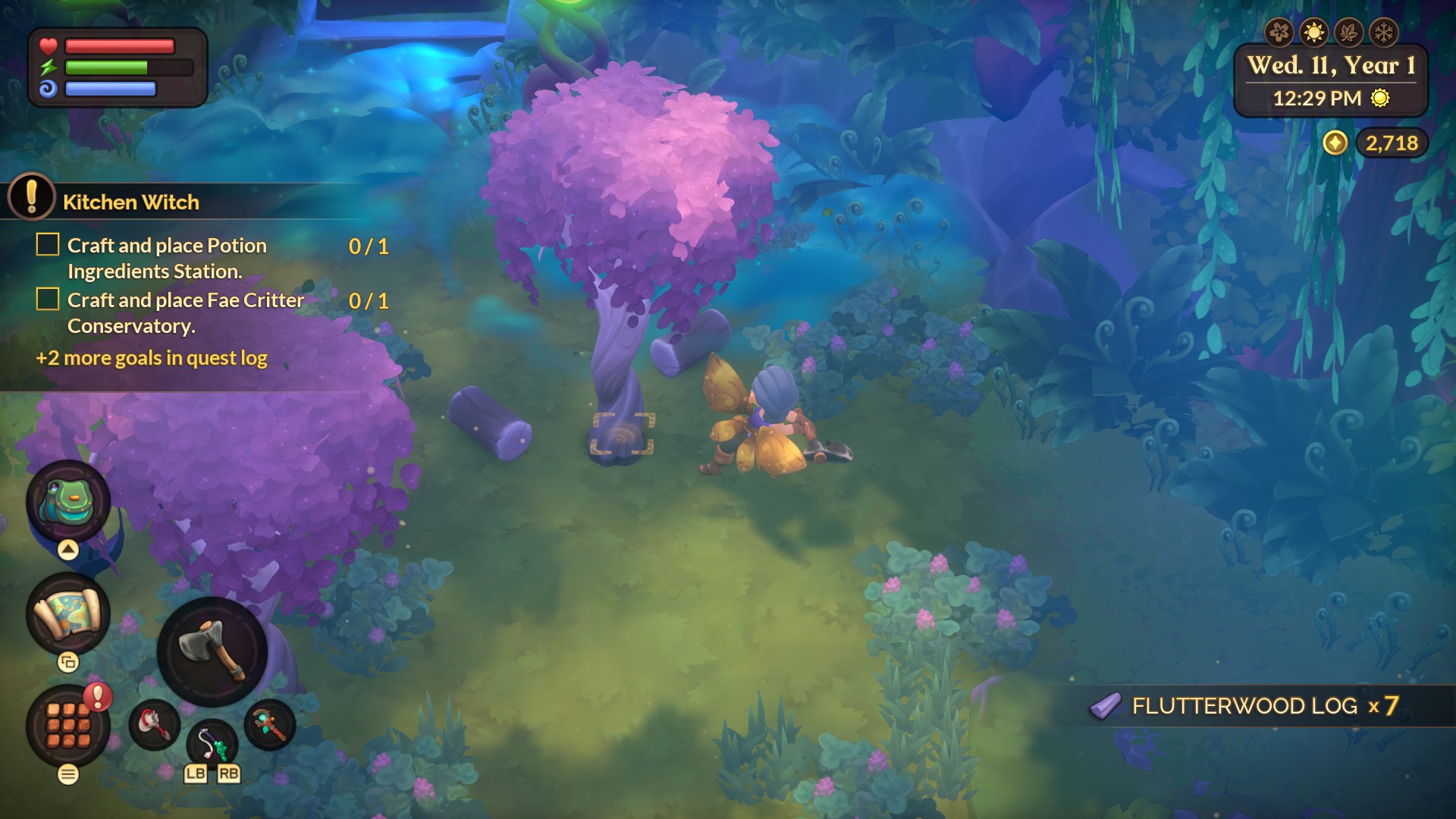
Here again we’ve got more minerals, more grass items, and more gems, all of which are used to upgrade tools and progress further, all culminating in dealing with a rather smarmy jellyfish sprite. And I genuinely promise that having to do this a second time around was entertaining to me. I had fun the first time through; I was ready for a second run while also coming at the encounter with a bit more knowledge and preparedness. I also was enjoying the ambience of bouncing off of mushrooms and being attacked by harps and cellos. I wasn’t a fan of the statues, however. Those things were annoying.
When I finally did beat the dungeon, cleared the miasma, and returned the fae realm to a point of safety, my reward for it all was a third farm, complete with its own unique crops and animals to raise. Mechanically speaking, this is once more precisely the same as those activities in the human realm but with that fairy flavor to it. And I was genuinely excited. Moving further into the next biome, it became clear that there would be a fourth farm to unlock and a third dungeon to delve, to say nothing of all of the new materials to find. Again, I know this might strike as being facetious, but I truly was looking forward to all of this.
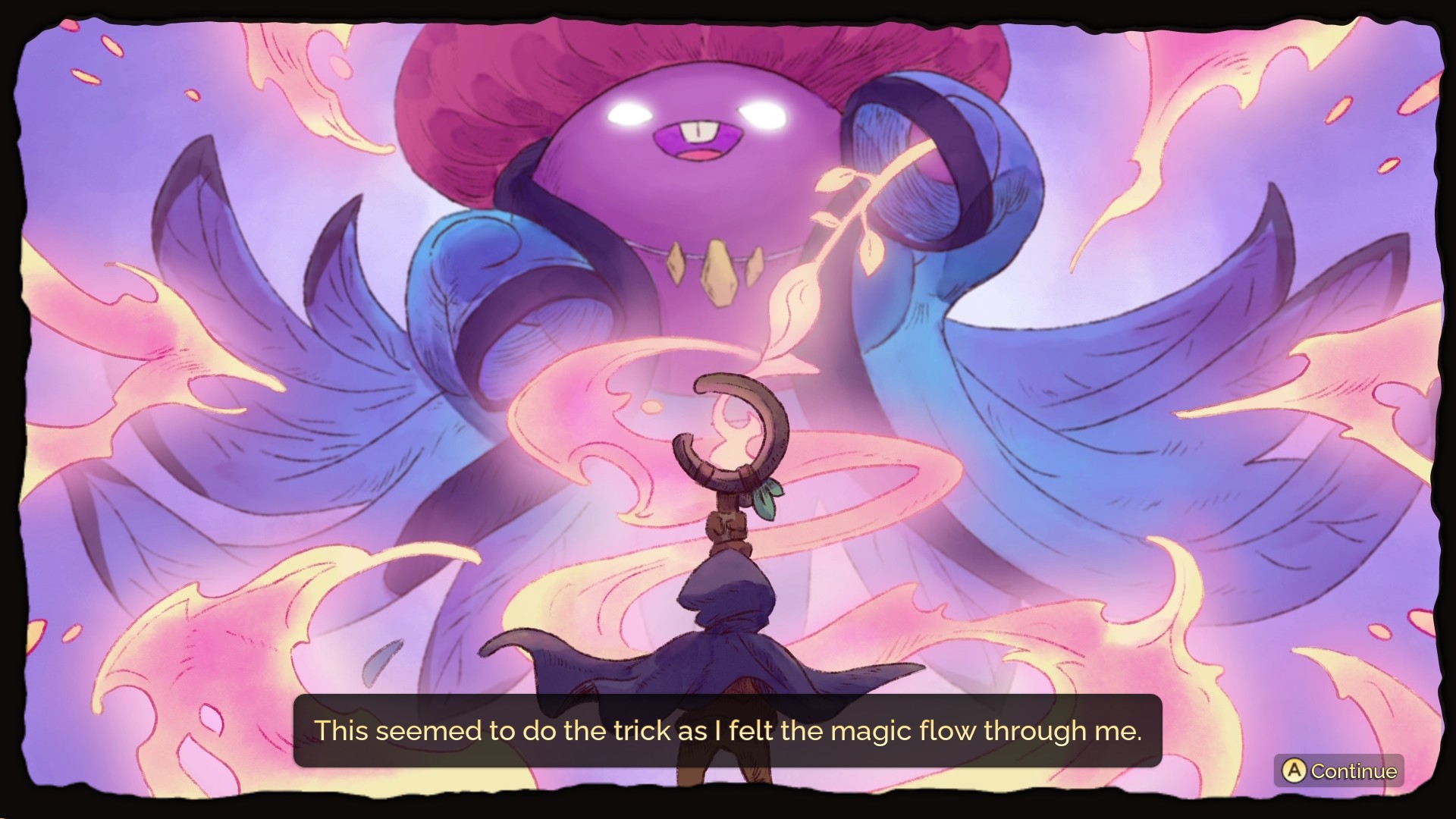
When executed well, these kinds of games do something to my brain that is hard to define. Fae Farm treads this familiar gaming ground and re-treads its own earlier ground, but it’s so colorful and cheerful and bubbly that it’s very hard no to get sucked up in to. There’s something about the candy-like and fable-filled nature of this world – especially the fae realm – that really endears. Moreover, I have found myself loving the story; I haven’t been deeply or emotionally invested in it, but it absolutely charms with its beats, its characters, and its overall vibe.
Better yet, having the eventual opportunity to open up four different farms means that multiplayer could become very entertaining. I once more wasn’t able to play in multiplayer since I didn’t have anyone in my friends list, but the option will be there when the launch floodgates open, and the design of Fae Farm feels like one that’s enhanced with friends around. I genuinely hope I get to share all of this with friends.
Now, all of this raises the question of what awaits once all of the story chapters are done and the four farms are unlocked, and Phoenix Labs has said in a press junket only that post-launch updates will be about quality-of-life, deeper multiplayer functionality, and “other content updates.”
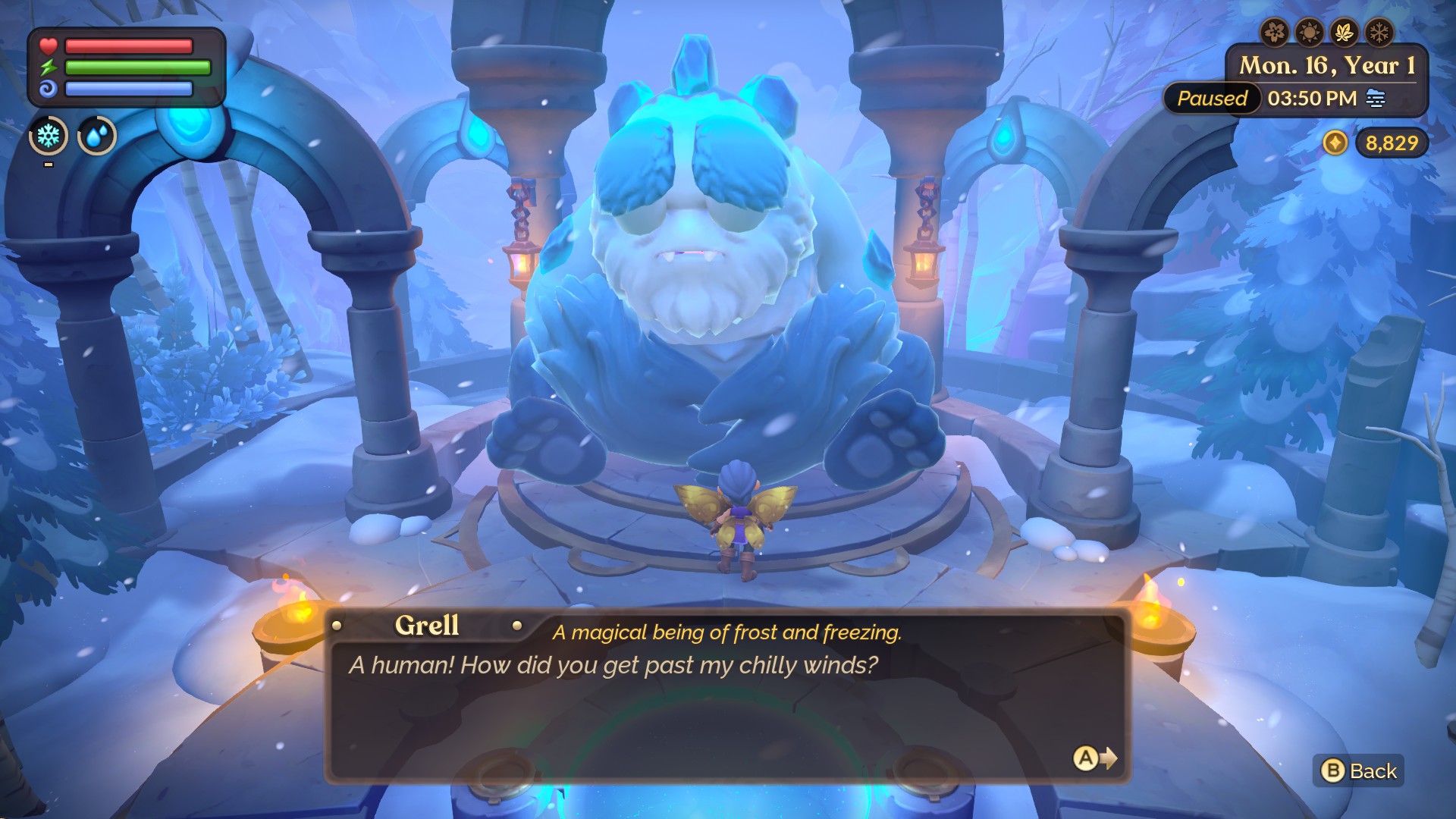
It will ultimately be the pace or the size of those updates that will make up a lot of multiplayer gamers’ minds, and I say this as someone who feels that he was going through the title rather casually. It’s very possible there will be those who absolutely blitz through the game’s progression loops at breakneck pace. Still, there is a lot of delightful game going on here, especially for its $40 price tag on PC (though it’s still $60 on Nintendo Switch) – a price tag that doesn’t also include a cash shop or battle pass.
Yes, I admit, Fae Farm really doesn’t want to divert too far from what makes these kinds of titles work, and that might be a tripping point for most. Personally, though, I can say this still remains the kind of game I wanted it to be. I don’t mind that the second verse was the same as the first; it’s a really well-played tune. Give me more of it.

